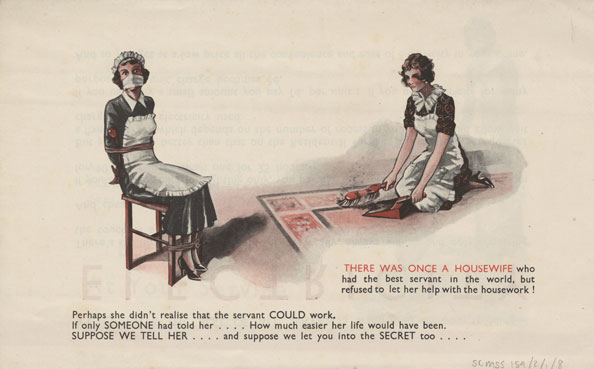The Yorkshire Electric Power Company (YEPC) was incorporated 26th July 1901 by an Act of Parliament promoted by a number of Yorkshire manufacturers. It was a supplier created at a time when the known uses of electricity for power purposes were limited, and whilst electricity for lighting, though available in larger towns, was still not in general use. It supplied its first consumer 21 January 1905. Initially, like other power companies, it could only supply for power and lighting where power was used so in 1905 it created Electrical Distribution of Yorkshire Limited (EDYL) which was registered for the purpose of supplying electricity for all purposes.
The YEPC name disappeared in 1948 following the nationalisation of the electrical power industry in the United Kingdom via The Electricity Act 1947. That Act nationalised over 500 separate electricity generation and supply organisations, both state owned and privately owned, on 1 April 1948, and consolidated them into 14 area electricity boards of the new Central Electricity Authority that the Act created (subsequently became the Central Electricity Generating Board or CEGB). YEPC was one of the private companies, which together with many local authority undertakings, was merged into the Yorkshire Electricity Board.
Power Generation and Supply Infrastructure of YEPC
Originally YEPC had proposed to build four power stations from which the whole of the company’s operating area could be supplied, but at the beginning it had to be content with a station at Thornhill, near Dewsbury which contained 3 turbines (see image below).

As the years passed, the distribution system was gradually extended and further generating plant was installed. A second Power Station was erected at Barugh, near Barnsley, in 1912 and a third in 1926 at Ferrybridge (image shown below), whilst important extensions were made at Thornhill. By 1933 the total capacity of the company’s 3 stations was 116,500 kW.

By 1933 the company had over 2,100 miles of mains, 775 substations and 214 pole transformers and the areas of supply of YEPC and EDYL (existing and projected) at that time can be seen in the following diagram (shows 33kV and 66kV mains).

YEPC Marketing to Attract New Customers and/or Increase Demand
In the case of large potential users of electricity, such as mills, factories and collieries, of which there were some 2000 in the company’s area of supply, making contact was done via a personal call, and information was recorded in a card index. For the 120,000 potential domestic users, personal calls were not feasible and YEPC had 2 direct mail publicity divisions, one targeting existing customers and one targeting new customers.
For existing customers marketing materials would be put into envelopes along with ‘normal’ communications or account forms would have had marketing wording printed on the front or the back – the purpose being to increase a customer’s use of electricity. For non-customers, particularly given the large area over which YEPC operated, showrooms were only provided in larger centres of population. For smaller towns and the county districts surrounding them, there would be exhibitions staged in local halls and lasting 7-10 days, or lectures given, both of which would be promoted in local newspapers, on hoardings and in public conveniences! The image below shows schoolgirls attending a cookery demonstration.

Amongst the archive collections we hold a range of these YEPC publicity materials from the 1930s such as the leaflet, ‘what’s Uncle George brought us for Christmas’ shown below.

Another leaflet, targeted at housewives, was titled, ‘you have the best of all servants waiting to do your bidding – ELECTRICITY’. It included a series of illustrations highlighting the costs of using electricity. Some of the illustrations are replicated below.


Another of the many marketing methods used by YEPC was the ‘electricity van’ which was a travelling showroom. The following item is a marketing flyer used in association with this van.


We are fortunate to hold this YEPC material within our C. T. Melling collection (archive reference SC MSS 159). Cecil Melling spent a brief period in the 1930s with YEPC before going on to become Chairman of the Eastern Electricity Board post-nationalisation, a position which he held for 11 years. The Melling collection can be consulted in the IET Archives at Savoy Hill House, London, by appointment.

Leave a comment